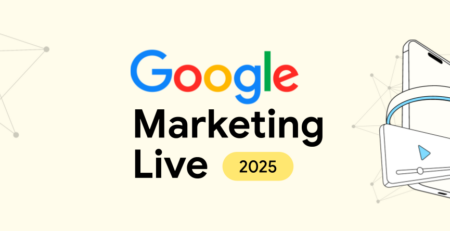Everything you need to know about affiliate marketing in 2024
Affiliate marketing has been around for a while now (the Amazon affiliate program began in 1996!). What started as product links crammed into articles has evolved into lucrative careers for bloggers and influencers and an effective marketing strategy for brands.
And in 2024, it’s being underutilized.
Over the last few years, affiliate marketing has surged, with more and more people trying their hand at becoming affiliates for their favorite brands. And, while typically, only large companies used to have an affiliate program, smaller businesses are now realizing its potential. Around the world, TikToks with the hashtag #affiliatemarketing have been viewed 1 billion times in the last 30 days alone.
We spoke with Ocean Clarke, Group Account Director at Brainlabs, to get her thoughts on affiliate marketing and how it’s currently being underutilized by brands.
Affiliate vs influencer marketing
Affiliate and influencer marketing often go hand-in-hand, but they’re not the same.
In influencer marketing, brands partner with influential individuals to create campaigns that drive brand engagement and sales. Businesses pay the influencer to make each specific piece of content that they post for their followers.
Affiliate marketing is where brands offer creators a percentage of a product sale. Affiliates aren’t paid upfront but are incentivized to promote the brand as they earn a commission on every item bought through their unique affiliate link. Brands can easily track affiliate marketing campaigns through networks, so they can monitor the traffic and sales of each product and other KPIs.
Creators can share their affiliate links on their website, all of their social media channels, newsletters, work Slack channel, the extended-family group chat, a banner in the sky… Okay, maybe not the last three, but you get the idea. The reach can be massive.
So in 2024 how should brands approach it?
Affiliates need a strong following to gain traction, right? Not necessarily.
Affiliate marketing used to be utilized by large brands and influencers with thousands or even millions of followers. Many Instagram influencers became affiliates to promote products to their already-established following.
Creators, such as Jackie Aina and Mollie Campsie, use their Instagram and LTK accounts to post affiliate links to beauty, fashion, and lifestyle products. And with a respective 1.9M and 755K followers, we’d imagine they’re making serious bank.
But as AI generated feeds expand across TikTok and other social media platforms, more opportunities are opening up, and smaller creators are also seeing success. Ocean says, “We’re seeing a role reversal in that you can be a very small UGC creator without a big following, start affiliate marketing, and then grow your following a lot.”
Smaller-scale affiliates mean any brand or anyone who has something to sell can use affiliate marketing while staying within their budget. What’s more? It democratizes the marketing landscape, enabling even the smallest brands to tap into the power of affiliate marketing without massive price tags. The beauty of this model is that it requires no upfront creator costs, making it an incredibly cost-effective option for small businesses. Brands can start small, scale up as they see success, and maintain control over their marketing spend, ensuring they get the best possible ROI.
Building long-standing partnerships with creators (especially in the wake of AI content being produced on socials), will differentiate your brand as an authentic voice in the social landscape.
TikTok affiliates have grown significantly over the past couple of years, and 9 billion videos with the hashtag #TikTokaffiliate have been viewed in the last 12 months. You can see that this hashtag died down towards the end of last year but spiked again at the start of 2024. Currently, it’s at 185 million views.
Is TikTok Shop actually effective?
With the launch of TikTok Shop towards the end of 2022, both brands and affiliates can promote their products directly on the app, even if they don’t have a huge following. To sell on TikTok Shop, you only need 1,000 followers (recently lowered from 5,000). TikTok has over a billion global users, and as creators can sell to people who aren’t following them, there is significant potential reach. TikTok’s AI algorithm makes it easier for smaller creators to gain organic traffic, make money, and increase brand sales.
TikTok Shop has been a fantastic tool for cost effective promotions. But it is still evolving. It’s not known for higher end products, predominantly being used for low- to mid-range priced items, but as its popularity grows, more brands are realizing the platform’s potential.
Can higher-priced, established brands use TikTok to sell?
It is yet to be seen if major mainstream companies will move over to TikTok Shop, but there are certainly mid/high-end brands already thriving on the platform. Ocean says, “We’re seeing so many more people get involved with TikTok Shop. It’s a lot more collaborative and becoming more popular now because they make it so easy.”
Luxe Collective is a luxury brand that sells pre-owned designer bags, shoes, and accessories. They have 1.6M followers on TikTok and have sold over 1.8K products on TikTok Shop. Their items range from over £100 up to around £5,000 – so this means that TikTok Shop customers are splashing out on high-quality purchases,
Women’s wellness and nutrition brand Free Soul is also using TikTok to boost their sales. They have 49.2K TikTok followers and are a customer favorite on TikTok Shop, having sold over 758K products. Free Soul has been featured in Marie Claire, Women’s Health, and The Independent, to name a few, and have excellent reviews. The point is that they’re a well-established and trusted brand, and they’re killing it on TikTok Shop.
Brands that do choose to use TikTok Shop could differentiate themselves from their competition as the platform is still relatively undersaturated.
Three alternative affiliate marketing platforms
Of course, TikTok Shop is just one of the ways that brands can partner with affiliates. There are so many underutilized platforms that brands could take advantage of with affiliate marketing. Here are some that need to be acknowledged.
- Social media bios
This is probably the most obvious option, but creators can promote products on their socials and redirect customers to the brand site through affiliate links in their bios. While this traditionally required a large following, the algorithms behind TikTok’s For You Page and Instagram Reels can now organically push content to its target audience. If creators advertise on YouTube, they can directly post affiliate links in their video descriptions.
- LTK
LTK (Like to Know It) allows creators to post outfit photos and link directly to each item. Just like on ASOS, customers can search for what they want, but then they can see how clothes look on their favorite influencers. We mentioned her before, but Mollie Campsie’s midsize wardrobe has firmly solidified her success on the platform.
- Lives
Live videos can be an effective way for creators to promote and review products. By strategically sharing affiliate links, influencers can encourage immediate purchases while maintaining authenticity.
Which affiliates are right for your brand?
There are many different ways that brands can integrate affiliate marketing into their overall strategy, and there’s no shortage of affiliates. With new creators constantly emerging, brands of all sizes and budgets can tap into the industry.
The key to affiliate marketing is to think beyond the norm. Whether that’s the affiliates you partner with or the platforms they use, how can your products cut above the noise to reach your target audience?
Affiliate marketing is great for driving direct sales and has certainly earned its place in the media mix. But to truly maximize its potential you need to combine these efforts with influencer marketing. That’s how you keep your brand desirable and fuel those bottom-funnel actions.
The future outlook? Affiliate marketing is likely to continue being cost effective for quite some time, but keep an eye on new paid social ad formats, like YouTube product feeds too. These super direct, low-barrier alternatives might shake things up for affiliate marketing by targeting users in their everyday scrolls.
At the end of the day, expert advice is what will differentiate you from the social noise. Need expert advice on keeping your brand relevant? Talk to us at Brainlabs. We’ll help you harness the power of influencer to support your affiliate marketing efforts and supercharge your overall strategy.




